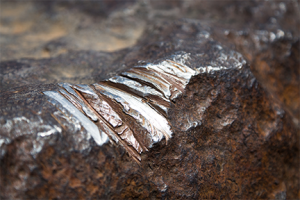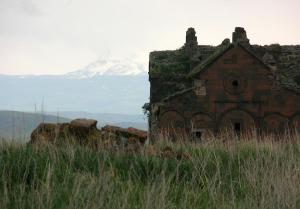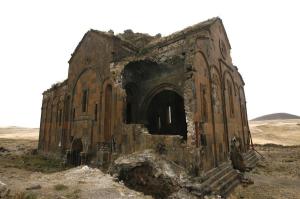Roads are important in history. Cultures become portable and ideas are exchanged across vast distances when good roads are available. Major trading routes were the interstate highways of antiquity. You might remember learning about the “Silk Road” in school. Your class might even have spent a couple of days discussing how important it was for China to get their expensive and highly prized silk fabrics all the way to Rome. (Like getting the latest iPhone shipped to the Apple Stores on time.) But have you heard of the Persian Royal Road that predates the better known Silk Road?
 Treasures of Dodrazeb: The Origin Key is an historical sword-and-science fantasy adventure. Click here to read an excerpt.
Treasures of Dodrazeb: The Origin Key is an historical sword-and-science fantasy adventure. Click here to read an excerpt.
Even though there’s no road to Dodrazeb, a third-century invading Persian warrior becomes obsessed with the strange isolated kingdom that possesses incredible technology, including methods for communicating over vast distances that are familiar in modern times. Ancient Dodrazeb’s puzzling choice to hide from the world pulls him deeper into layers of mysteries as its sly princess does everything she can to expel the invaders. What are the Dodrazebbians so desperate to keep hidden?
Get your copy on Amazon.com! Available in both e-book and paperback.
 The Chinese began making silk fabrics around the year 2700 BCE. Reserved exclusively for use in their imperial court, methods for creating silk were kept secret for more than 3,000 years. But silks showed up in other parts of the world as the Chinese traded it extensively with their nearest neighbors and used it as diplomatic gifts. Early in the first century BCE, silk became prized in the Roman Empire as a rare and exotic luxury. Trading routes were developed and expanded to move the goods from East to West. From Rome, the desire for silk was introduced to other western cultures.
The Chinese began making silk fabrics around the year 2700 BCE. Reserved exclusively for use in their imperial court, methods for creating silk were kept secret for more than 3,000 years. But silks showed up in other parts of the world as the Chinese traded it extensively with their nearest neighbors and used it as diplomatic gifts. Early in the first century BCE, silk became prized in the Roman Empire as a rare and exotic luxury. Trading routes were developed and expanded to move the goods from East to West. From Rome, the desire for silk was introduced to other western cultures.
The silk trade was important in moving people and products back and forth across Asia, but it wasn’t the only product in demand. Textiles, spices, grain, fruits and vegetables, furs, tools, religious objects, art, precious stones, and much more made the network of Silk Roads well-travelled through the Middle Ages and into the 19th century. Merchants and traders could choose from different routes that crossed Eastern Europe, the Middle East, Central Asia and the Far East. There were also maritime routes which shipped goods from China and South East Asia through the Indian Ocean to Africa, India, and the Near East.
 Much more was exchanged along the Silk Roads than just sought after trade goods. The trade routes connected major cities and civilizations, making cultural interaction necessary. Languages and customs were understood and adopted to make buying and selling possible. Religions and cultures developed and influenced each other because knowledge about science, arts, literature, crafts, and technologies was shared across the Silk Roads. By the way, scientists and historians now widely believe that the route was a primary way that the Black Death plague bacteria moved westward into Europe.
Much more was exchanged along the Silk Roads than just sought after trade goods. The trade routes connected major cities and civilizations, making cultural interaction necessary. Languages and customs were understood and adopted to make buying and selling possible. Religions and cultures developed and influenced each other because knowledge about science, arts, literature, crafts, and technologies was shared across the Silk Roads. By the way, scientists and historians now widely believe that the route was a primary way that the Black Death plague bacteria moved westward into Europe.
 Before the network of Silk Road trading routes, there was the Persian Royal Road which would become one of the main arteries of the Silk Road. Before his death circa 529 BCE, Cyrus the Great had conquered a vast amount of territory, uniting many small and large kingdoms and peoples under his rule. His Achaemenian Empire survived for more than two centuries due to his willingness to support local customs and religions of the people he conquered.
Before the network of Silk Road trading routes, there was the Persian Royal Road which would become one of the main arteries of the Silk Road. Before his death circa 529 BCE, Cyrus the Great had conquered a vast amount of territory, uniting many small and large kingdoms and peoples under his rule. His Achaemenian Empire survived for more than two centuries due to his willingness to support local customs and religions of the people he conquered.
When Darius the Great (521-485 BC) rose to power, he realized the Empire needed efficient organization. To prevent his territorial governors from gaining enough power to overthrow him, Darius appointed a separate military commander for each territory. Darius monitored his governors and commanders by using imperial spies. These “king’s ears” kept tabs on both and reported back to Darius through the postal service. The Empire was connected by a network of Royal Roads with stations spaced a day’s travel apart. Like the Silk Road that came later, these routes promoted cultural interaction, uniting disparate peoples in the far-flung Persian Empire.
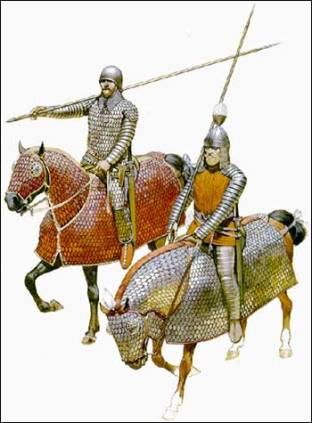 The Persian Royal Road ran from Susa, in north Persia (modern Iran) to the Mediterranean Sea in Asia Minor (modern Turkey) a distance of more than 1,600 miles. The postal stations at regular intervals along the route provided fresh horses for envoys to quickly deliver messages throughout the empire and inspired the famous line “Neither snow nor rain nor heat nor gloom of night stays these couriers from the swift completion of their appointed rounds.” (see my post Ancient Persia’s Pony Express) Relay messengers could traverse the entire road in a mere nine days, sometimes only seven or eight. Normal travel time for caravans or casual travelers was about three months.
The Persian Royal Road ran from Susa, in north Persia (modern Iran) to the Mediterranean Sea in Asia Minor (modern Turkey) a distance of more than 1,600 miles. The postal stations at regular intervals along the route provided fresh horses for envoys to quickly deliver messages throughout the empire and inspired the famous line “Neither snow nor rain nor heat nor gloom of night stays these couriers from the swift completion of their appointed rounds.” (see my post Ancient Persia’s Pony Express) Relay messengers could traverse the entire road in a mere nine days, sometimes only seven or eight. Normal travel time for caravans or casual travelers was about three months.
The Persian Royal Road was so impressive that Alexander the Great used it in his invasion and conquest of the Persian empire in 334 BCE. Never underestimate the importance of good roads—and how they can be used.
Sources
https://www.thoughtco.com/royal-road-of-the-achaemenids-172590
http://www.livius.org/articles/concept/royal-road/
https://en.unesco.org/silkroad/about-silk-road
https://www.britannica.com/topic/Silk-Road-trade-route
https://www.ancient.eu/Silk_Road/
https://searchinginhistory.blogspot.com/2014/04/royal-road-highway-of-persian-empire.html

 Even though it set speed records for mail delivery and became a well-loved and thoroughly romanticized piece of historical lore, the Pony Express was only in operation for 19 months. In that brief time, it failed to secure a lucrative government mail contract and never turned a profit. Between hostile Native Americans and the completion of the transcontinental telegraph system, the Pony Express was driven out of business and became obsolete in October of 1861.
Even though it set speed records for mail delivery and became a well-loved and thoroughly romanticized piece of historical lore, the Pony Express was only in operation for 19 months. In that brief time, it failed to secure a lucrative government mail contract and never turned a profit. Between hostile Native Americans and the completion of the transcontinental telegraph system, the Pony Express was driven out of business and became obsolete in October of 1861. So, just how did that famous phrase come to be associated with the U.S. Postal Service? The unofficial motto is inscribed in granite over the entrance of the James A. Farley building at Eighth Avenue and 33rd Street in New York City, right in the middle of Manhattan. Back in the early twentieth century, the architectural firm of McKim, Mead & White was chosen to design the New York General Post Office building. Construction began in 1912 and it was opened to the public in 1914. The building was doubled in size in 1934 and its name was changed to honor Postmaster General James A. Farley.
So, just how did that famous phrase come to be associated with the U.S. Postal Service? The unofficial motto is inscribed in granite over the entrance of the James A. Farley building at Eighth Avenue and 33rd Street in New York City, right in the middle of Manhattan. Back in the early twentieth century, the architectural firm of McKim, Mead & White was chosen to design the New York General Post Office building. Construction began in 1912 and it was opened to the public in 1914. The building was doubled in size in 1934 and its name was changed to honor Postmaster General James A. Farley. William Mitchell Kendall was one of the architects. Kendall, who frequently read classic Greek literature for pleasure, had grown up in a wealthy household with a father who was a scholar of the classics. He selected a passage (translated by Professor George Herbert Palmer of Harvard University) from book 8, paragraph 98, of The Persian Wars by the ancient Greek historian Herodotus (c 484–c 425 BCE). The Post Office Department agreed that Kendall’s slight modification of the original translation was suitable for the building, and approved it.
William Mitchell Kendall was one of the architects. Kendall, who frequently read classic Greek literature for pleasure, had grown up in a wealthy household with a father who was a scholar of the classics. He selected a passage (translated by Professor George Herbert Palmer of Harvard University) from book 8, paragraph 98, of The Persian Wars by the ancient Greek historian Herodotus (c 484–c 425 BCE). The Post Office Department agreed that Kendall’s slight modification of the original translation was suitable for the building, and approved it. When Plato wrote about a utopian island kingdom as an allegorical tale, he had no idea that our modern pop culture would become riddled with references to the “lost continent of Atlantis” thousands of years later. The idea that Atlantis might have been a real place that collapsed into the sea at the height of its power and influence has captured the modern imagination—and kept it in a chokehold for generations.
When Plato wrote about a utopian island kingdom as an allegorical tale, he had no idea that our modern pop culture would become riddled with references to the “lost continent of Atlantis” thousands of years later. The idea that Atlantis might have been a real place that collapsed into the sea at the height of its power and influence has captured the modern imagination—and kept it in a chokehold for generations. Another legendary city known for its lavish architecture and utopian lifestyle is Dwarka, translated as “Gateway to Heaven” in Sanskrit. According to the ancient Hindu Mahabharata texts, Dwarka was founded by Krishna, the blue Hindu god of compassion, tenderness, and love. The city is described as having 900,000 royal palaces, all made of crystal and silver and decorated with emeralds. It featured an elaborate system of boulevards, roads, market places, assembly houses, and temples. The ancient texts describe how the evil King Salva declared war and attacked Dwarka with a flying machine using lightning-like energy weapons. Lord Krishna counterattacked, firing his weapons described as arrows “roaring like thunder and shining like the rays of the sun.” Their devastating battle left most of the city in ruins.
Another legendary city known for its lavish architecture and utopian lifestyle is Dwarka, translated as “Gateway to Heaven” in Sanskrit. According to the ancient Hindu Mahabharata texts, Dwarka was founded by Krishna, the blue Hindu god of compassion, tenderness, and love. The city is described as having 900,000 royal palaces, all made of crystal and silver and decorated with emeralds. It featured an elaborate system of boulevards, roads, market places, assembly houses, and temples. The ancient texts describe how the evil King Salva declared war and attacked Dwarka with a flying machine using lightning-like energy weapons. Lord Krishna counterattacked, firing his weapons described as arrows “roaring like thunder and shining like the rays of the sun.” Their devastating battle left most of the city in ruins. Until recently the very existence of Dwarka was thought by many to be merely legend. In 2001 the Indian government recovered materials from an underwater archaeological site in the Gulf of Khambhat. Pottery, sections of walls, beads, sculpture, and human bones and teeth from the site were carbon dated and found to be nearly 9,500 years old. Marine archaeologists have mapped sandstone walls, street grids, and remains of a busy and important seaport at 70 feet under water.
Until recently the very existence of Dwarka was thought by many to be merely legend. In 2001 the Indian government recovered materials from an underwater archaeological site in the Gulf of Khambhat. Pottery, sections of walls, beads, sculpture, and human bones and teeth from the site were carbon dated and found to be nearly 9,500 years old. Marine archaeologists have mapped sandstone walls, street grids, and remains of a busy and important seaport at 70 feet under water.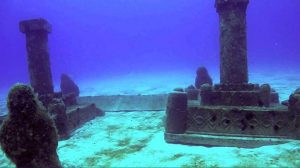 What has been investigated so far corresponds closely to descriptions of Dwarka in the Mahabharata. Many semicircular, rectangular, and square stone structures, as well as stone anchors have been documented, indicating a thriving overseas trade coming through this port city on the west coast of India. Scientists believe the area was submerged as ice caps melted at the end of the last ice age nine to ten thousand years ago.
What has been investigated so far corresponds closely to descriptions of Dwarka in the Mahabharata. Many semicircular, rectangular, and square stone structures, as well as stone anchors have been documented, indicating a thriving overseas trade coming through this port city on the west coast of India. Scientists believe the area was submerged as ice caps melted at the end of the last ice age nine to ten thousand years ago.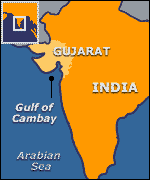 Explorations of the Dwarka site are challenging long-held scientific beliefs. For instance, mainstream science holds that ancient Indian culture goes back some four to five thousand years. Yet these ruins are at least nine thousand years old, dating back to a time when the area submerged under water. The city must have existed before the flooding by centuries—if not by millennia—for it to have grown and expanded to become the bustling seaport that it became.
Explorations of the Dwarka site are challenging long-held scientific beliefs. For instance, mainstream science holds that ancient Indian culture goes back some four to five thousand years. Yet these ruins are at least nine thousand years old, dating back to a time when the area submerged under water. The city must have existed before the flooding by centuries—if not by millennia—for it to have grown and expanded to become the bustling seaport that it became.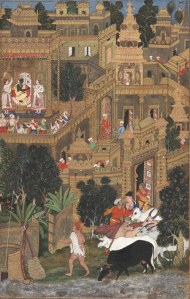 Now that these remains have been discovered under water, there is evidence that the legendary Dwarka did exist. It was a real city populated with living citizens suggesting that Indian civilization may be twice as old as scientists have believed. Whether or not it was also the dwelling place of lord Krishna and his aerial battle with king Salva was an historical occurrence is still a matter of some debate.
Now that these remains have been discovered under water, there is evidence that the legendary Dwarka did exist. It was a real city populated with living citizens suggesting that Indian civilization may be twice as old as scientists have believed. Whether or not it was also the dwelling place of lord Krishna and his aerial battle with king Salva was an historical occurrence is still a matter of some debate. It’s fun to speculate that there are bizarre truths behind mysterious stories. From Sasquatch to ESP to UFOs, I’ve always been a fan of weird stuff. Give it a paranormal twist—throw in some vampires or poltergeists—and I’m riveted. Package it all as a quasi-documentary/semi-reality TV show with Leonard Nimoy as host, and you have one of my favorites from the 1970s. The incredibly popular In Search Of… presented speculation and conjecture as possible explanations for enduring mysteries such as the identify of Jack the Ripper or the truth about the lost continent of Atlantis.
It’s fun to speculate that there are bizarre truths behind mysterious stories. From Sasquatch to ESP to UFOs, I’ve always been a fan of weird stuff. Give it a paranormal twist—throw in some vampires or poltergeists—and I’m riveted. Package it all as a quasi-documentary/semi-reality TV show with Leonard Nimoy as host, and you have one of my favorites from the 1970s. The incredibly popular In Search Of… presented speculation and conjecture as possible explanations for enduring mysteries such as the identify of Jack the Ripper or the truth about the lost continent of Atlantis.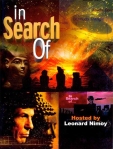 In Search Of… was informative, fun, and nerdy, providing some ambiguous answers and leaving the door open for other (more plausible) explanations. It was lightweight entertainment, but it turned me on to some real enduring mysteries: Stonehenge, the Great Pyramids, the Nazca Plains, the mystery of Roanoke Colony, the genius of Nikola Tesla, and so much more.
In Search Of… was informative, fun, and nerdy, providing some ambiguous answers and leaving the door open for other (more plausible) explanations. It was lightweight entertainment, but it turned me on to some real enduring mysteries: Stonehenge, the Great Pyramids, the Nazca Plains, the mystery of Roanoke Colony, the genius of Nikola Tesla, and so much more. Today I am an avid fan of Josh Gates and his series Expedition Unknown. Gates, a scholar with an appetite for exotic food and amazing adventures, is a man-mountain of globe-trotting curiosity. He’s an archaeologist with an infectious enthusiasm for the bizarre who seeks the truth about ancient and historical mysteries. To get at the real story behind whatever myth or legend he’s investigating, Gates employs scientific research methods presented as heart-pounding adventures filmed around the world.
Today I am an avid fan of Josh Gates and his series Expedition Unknown. Gates, a scholar with an appetite for exotic food and amazing adventures, is a man-mountain of globe-trotting curiosity. He’s an archaeologist with an infectious enthusiasm for the bizarre who seeks the truth about ancient and historical mysteries. To get at the real story behind whatever myth or legend he’s investigating, Gates employs scientific research methods presented as heart-pounding adventures filmed around the world. Expedition Unknown has taken Gates to some of the most remote and dangerous locations on the planet. Indiana Jones would be impressed by his ability to access and explain never-before-seen artifacts while getting into some precarious circumstances. On each mission, Gates interacts with the people and shares impressions of the culture he’s visiting. He also indulges in the local cuisine, a segment that should come with a warning for the squeamish.
Expedition Unknown has taken Gates to some of the most remote and dangerous locations on the planet. Indiana Jones would be impressed by his ability to access and explain never-before-seen artifacts while getting into some precarious circumstances. On each mission, Gates interacts with the people and shares impressions of the culture he’s visiting. He also indulges in the local cuisine, a segment that should come with a warning for the squeamish. Combining elements of travelogue with lessons in history and sociology, Gates takes the viewer on a journey of discovery filled with humor. Turn him loose in a tourist souvenir shop and he becomes a stand-up comedian. Put an obstacle in his path and he entertains viewers (and his camera crew) with groan-worthy one-liners.
Combining elements of travelogue with lessons in history and sociology, Gates takes the viewer on a journey of discovery filled with humor. Turn him loose in a tourist souvenir shop and he becomes a stand-up comedian. Put an obstacle in his path and he entertains viewers (and his camera crew) with groan-worthy one-liners.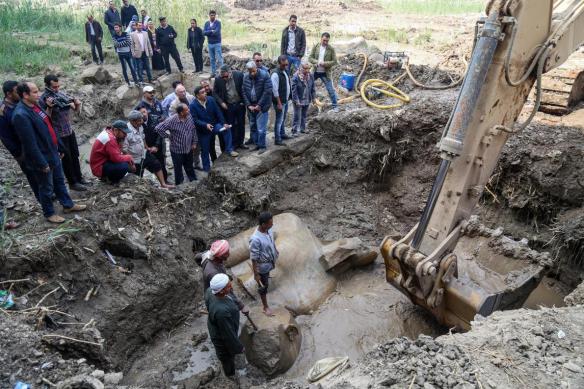 Ever think about the people who lived in your neighborhood thousands of years ago? Their culture was vastly different from ours, yet humans through the ages have been remarkably the same in many ways. They worked hard to feed and clothe their families. They looked to their leaders for protection from potentially hostile forces. They prayed for peace and prosperity. They engaged with their neighbors in communal events and sometimes in heated disputes. They toiled under the same sun and slept under the same moon as we do. They did all of this without the technological innovations we take for granted, with different belief systems, and with no idea how our world would evolve into what is has become today.
Ever think about the people who lived in your neighborhood thousands of years ago? Their culture was vastly different from ours, yet humans through the ages have been remarkably the same in many ways. They worked hard to feed and clothe their families. They looked to their leaders for protection from potentially hostile forces. They prayed for peace and prosperity. They engaged with their neighbors in communal events and sometimes in heated disputes. They toiled under the same sun and slept under the same moon as we do. They did all of this without the technological innovations we take for granted, with different belief systems, and with no idea how our world would evolve into what is has become today. A team of Egyptian and German archaeologists recently uncovered a 26-foot-tall statue of an ancient Egyptian ruler beneath the streets of Cairo. The find was made in a congested working-class area that was built over the ancient city of Heliopolis, the center of worship for the ancient Egyptian sun god Ra. Heliopolis is currently located about 49–66 feet below the streets of Cairo suburbs. During the Middle Ages, the ruins of Heliopolis were massively scavenged for building materials, and the city was eventually buried under sprawling new developments.
A team of Egyptian and German archaeologists recently uncovered a 26-foot-tall statue of an ancient Egyptian ruler beneath the streets of Cairo. The find was made in a congested working-class area that was built over the ancient city of Heliopolis, the center of worship for the ancient Egyptian sun god Ra. Heliopolis is currently located about 49–66 feet below the streets of Cairo suburbs. During the Middle Ages, the ruins of Heliopolis were massively scavenged for building materials, and the city was eventually buried under sprawling new developments. They first thought it was Pharaoh Ramses II, also known in Greek as Ozymandias or Ramses the Great, who ruled Egypt from 1279 to 1213 B.C.E. He is believed by many to be the pharaoh who had that little run-in with Moses involving some plagues and a mass exodus from Egypt.
They first thought it was Pharaoh Ramses II, also known in Greek as Ozymandias or Ramses the Great, who ruled Egypt from 1279 to 1213 B.C.E. He is believed by many to be the pharaoh who had that little run-in with Moses involving some plagues and a mass exodus from Egypt.  As more pieces of the colossal statue were recovered, closer examination revealed more clues. Egyptian antiquities officials believe it may be Psamtik I, who ruled Egypt from 664 to 610 BC. Psamtik is notable for uniting all of Egypt and freeing it from Assyrian control within the first ten years of his reign. An inscription and other characteristics indicate that the artifact comes from Egypt’s Late Period and may be the largest statue from that era ever discovered.
As more pieces of the colossal statue were recovered, closer examination revealed more clues. Egyptian antiquities officials believe it may be Psamtik I, who ruled Egypt from 664 to 610 BC. Psamtik is notable for uniting all of Egypt and freeing it from Assyrian control within the first ten years of his reign. An inscription and other characteristics indicate that the artifact comes from Egypt’s Late Period and may be the largest statue from that era ever discovered.


 When simple clothing that hangs loosely from the shoulders is sufficient for comfort, modesty, and a sense of fashion style, why bother with fitted garments designed to cover from the waist down? Before trousers, everyone—men and women—wore relatively shapeless clothes. Clothing was long or short and covered a certain amount of legs and arms depending on the weather of the region and what was considered appropriate for males or females. The easiest way to clothe the human body is to drape cloth around it. Wrap a long fabric rectangle attractively, tie it or secure it with pins or belts to hold it in place, and you’re good to go!
When simple clothing that hangs loosely from the shoulders is sufficient for comfort, modesty, and a sense of fashion style, why bother with fitted garments designed to cover from the waist down? Before trousers, everyone—men and women—wore relatively shapeless clothes. Clothing was long or short and covered a certain amount of legs and arms depending on the weather of the region and what was considered appropriate for males or females. The easiest way to clothe the human body is to drape cloth around it. Wrap a long fabric rectangle attractively, tie it or secure it with pins or belts to hold it in place, and you’re good to go! Anyone who has ever sewn their own clothing can attest to the fact that getting all the various pieces of fabric stitched together correctly is not easy, and pants can be particularly difficult. Crotch depth, butt size, leg length, waist and thigh circumference—each of these measurements are critical to creating trousers that fit well. And then there is the issue of accessibility for, uhm, relieving oneself. It’s incredibly easy to lift a skirt, or toga, or robe, or tunic to take a quick bathroom break. It’s a different matter entirely when you have to peel off leg coverings and then put them back on without the benefit of zippers, buttons, or stretchy fabric. Trousers are complicated, so why did ancient cultures bother to perfect them?
Anyone who has ever sewn their own clothing can attest to the fact that getting all the various pieces of fabric stitched together correctly is not easy, and pants can be particularly difficult. Crotch depth, butt size, leg length, waist and thigh circumference—each of these measurements are critical to creating trousers that fit well. And then there is the issue of accessibility for, uhm, relieving oneself. It’s incredibly easy to lift a skirt, or toga, or robe, or tunic to take a quick bathroom break. It’s a different matter entirely when you have to peel off leg coverings and then put them back on without the benefit of zippers, buttons, or stretchy fabric. Trousers are complicated, so why did ancient cultures bother to perfect them? Early adopters of the bifurcated garment worn on the lower body needed something that would be functional when riding a horse. Right after humans domesticated and started riding horses about 4,000 years ago, they decided that comfort for the nether regions was highly desirable. Unsurprisingly, trousers were ideal to prevent chafing when astride a horse. What naturally followed was the rise of cavalry riders in armies of conquest, as mounted soldiers have a lot of advantages over infantry. That’s right—pants changed the course of history because they made it easier for soldiers to fight from horseback.
Early adopters of the bifurcated garment worn on the lower body needed something that would be functional when riding a horse. Right after humans domesticated and started riding horses about 4,000 years ago, they decided that comfort for the nether regions was highly desirable. Unsurprisingly, trousers were ideal to prevent chafing when astride a horse. What naturally followed was the rise of cavalry riders in armies of conquest, as mounted soldiers have a lot of advantages over infantry. That’s right—pants changed the course of history because they made it easier for soldiers to fight from horseback. Archaeologists discovered a pair of well-preserved burials in Yanghai in western China that support the idea of trousers being created for comfort while riding horses. The two men, each about 40 years old, were buried about 3000 years ago wearing trousers. Evidence indicates they had likely been warriors as well as herders. One man was buried with a decorated leather bridle, a wooden horse bit, a battle-ax and a leather bracer for arm protection. Objects placed with the other body included a whip, a decorated horse tail, a bow sheath and a bow.
Archaeologists discovered a pair of well-preserved burials in Yanghai in western China that support the idea of trousers being created for comfort while riding horses. The two men, each about 40 years old, were buried about 3000 years ago wearing trousers. Evidence indicates they had likely been warriors as well as herders. One man was buried with a decorated leather bridle, a wooden horse bit, a battle-ax and a leather bracer for arm protection. Objects placed with the other body included a whip, a decorated horse tail, a bow sheath and a bow.





